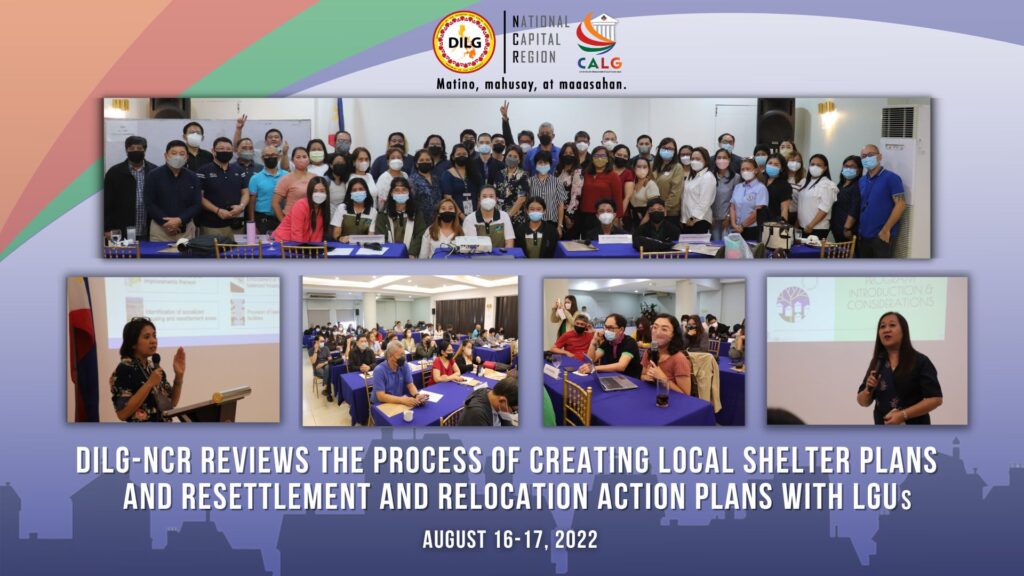
To capacitate the Local Government Unit (LGU) functionaries on the guidelines covering the crafting of a Local Shelter Plan (LSP) and a Resettlement and Relocation Action Plan (RRAP), the Department of the Interior and Local Government – National Capital Region (DILG-NCR) conducted a two-day training activity at Robbinsdale Residences in Quezon City from August 16 to 17, 2022.
The DILG-NCR brought together experts from the Department of Human Settlements and Urban Development (DHSUD) and the National Housing Authority (NHA) to discuss and review the technicalities involved in creating the said plans. The activity also took up common and pressing concerns related to the development of the LSP and RRAP.
On its first day, the activity focused on the overview of and rationale behind the LSP, the formulation process, and the key shelter agencies involved in the provision of socialized housing.
During her lecture, Ms. Mary Ann F. Policarpio, the officer-in-charge of the Public Housing and Settlements Division of DHSUD, emphasized that the housing provided by the key shelter agencies should be tied to the financial capacity of the stakeholders.
âWe should always remember that when providing socialized housing for our target stakeholders, the best housing is one that the stakeholders can afford and maintain given their current financial status, and one that will give them an improved standard of living,â Ms. Policarpio said when tackling the subject of acceptability of housing to the stakeholders.
Ms. Policarpio also highlighted the importance of inter-agency planning, coordination, and awareness of each institutionâs projects and programs that pertain to the housing and relocation and resettlement of target beneficiaries.
On the second day of the activity, Ms. Christine P. Firmalino, Department Manager of the Resettlement and Development Services Department of the NHA, discussed the rationale behind the creation of the RRAP, its basic policy and program considerations, and the technical processes involved in its formulation, including the strategic planning tools utilized for RRAP, among others.
Ms. Firmalino expressed a similar sentiment as Ms. Policarpio regarding the process of formulating the LSP and RRAP, in that complex processes and multiple planning perspectives should be considered in order to come up with an acceptable plan. This necessitates putting strong inter-agency relationships at the forefront of any undertaking of this nature.
After each lecture, an open forum followed in order to provide an avenue for the sharing of the LGUsâ housing knowledge and best practices, as well as raising housing-related concerns to the responsible agencies.
The back-to-back activity ended on a high note, with the LGUs present expressing their gratitude to the hosts and the resource speakers for sharing their technical expertise on LSP and RRAP.
